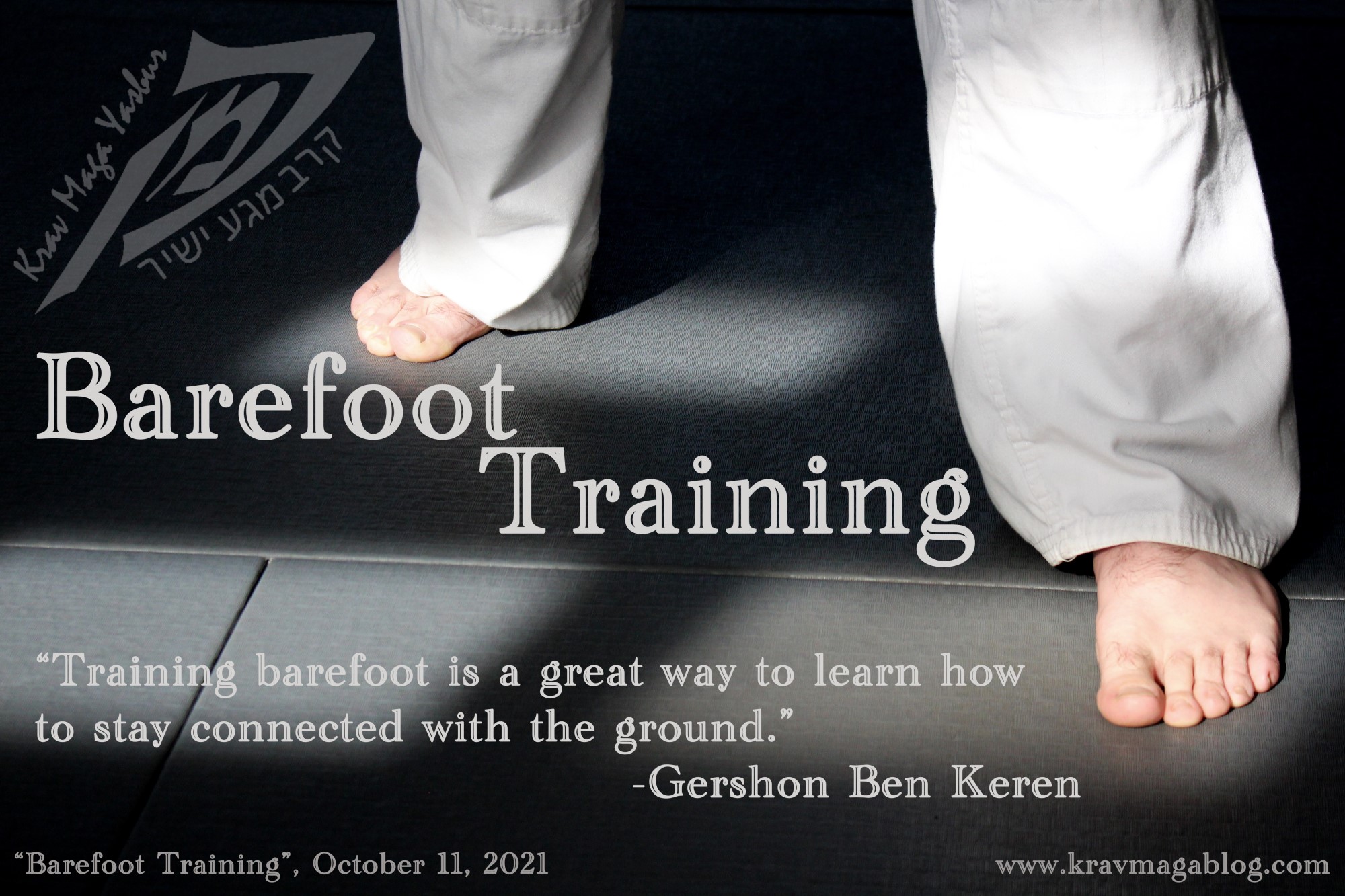Author: Gershon Ben Keren

Every now and then someone will leave a comment on a video I put up making the argument that because my students and I train barefoot, that this represents unrealistic training. Often such individuals believe that unless you are practicing in the clothes you’ll be wearing when attacked, etc, then you’re not training realistically. In this article I want to explain some of the benefits of training without footwear, and how if you train this way, you will not only be able to operate when wearing shoes or sneakers/trainers, you will in fact be less constricted by what you wear on the street e.g., if you always trained in sneakers but find that you are wearing dress shoes, then you will find it much harder to adapt to this “new” footwear, than if you’d been training barefoot. Obviously, there are times, such as when training outdoors, where I don’t train barefoot but by and large there are many tactical and physiological benefits to training barefoot, so it is makes up the largest percentage of my training.
Benefit One: You think more about your footwork – or you should - when training barefoot. Studies – including one by Allloway et al. (2016) – have shown that athletes give more attention to their footwork when training/running barefoot, which helps improve their working memory. Due to the fact that the feet are unprotected, athletes participating in the study gave much more consideration to where they placed their feet, compared with when they had the relative protection of a shoe. When we have footwear on, we tend to disregard where we place our feet, trusting the shoe to protect us. It is also easier to learn how to generate power in striking/punching when your foot is in direct contact with the ground, as sneakers/trainers direct the weight towards the toes, making it difficult to feel the heel lift, and push off from the ball of the foot – all of which is needed to initiate a punch; (there is a good reason why boxing shoes are flat, and don’t have a raised heel). Once you have learnt how to do it barefoot, it’s easy to transition this movement to different types of footwear. The other issue with learning how to punch in a sneaker, is that the sole is designed to absorb energy, so when you are learning to push off of the foot you are experiencing a compression of the sole as you drive/push off. Training on a martial arts mat, you get a degree of compression but it’s much easier to sense than when wearing footwear.
There have also been several studies (Villiers & Venter, 2014; Ozer et al., 2009) that have shown that training barefoot improves ankle stability and agility by considerable margins. The gains in proprioception, as a result of barefoot training, also significantly improve balance – and this isn’t lost when athletes transition back to wearing shoes. Another improvement that comes from this increase in neuromuscular awareness, is reduced leg fatigue. A very good way to actively train proprioception, is to stand on one leg – barefoot – and then close your eyes. Now, without a horizon to help keep you balanced, the feet and ankle will have to do a lot of the work. You should feel your foot, ankle and calf start to make small adjustments to help keep you upright. Your feet having the ability to automatically make these adjustments when you are on uneven terrain is a key fighting skill, along with having the sensitivity to know when the floor/ground has changed, especially when moving backwards e.g., one of the places where I worked as security, had a line of carpet at the top of some stairs, being able to recognize this change in flooring use to alert me to the fact that I shouldn’t move back anymore; sometimes when crowded it wasn’t possible to get a good visual cue on exactly where I was, and in the middle of a confrontation you don’t have the time to look around - it’s being able to feel these things that alert you to danger. Training barefoot is a great way to learn how to stay connected with the ground.
Another reason that we train barefoot in my school, is because we train in a fully matted area, the surface of which has some grip to it. This means you have a surface which gives your feet (which are slippery compared to it), good traction. If you were to wear sneakers/trainers or even wrestling shoes on it, it would give you too much grip, and wouldn’t create a realistic training surface/environment, and using “Glisha”/sliding steps to add power to kicks wouldn’t be possible. Concrete and other similar surfaces are smooth, and so when you put a trainer/sneaker on that has grip, you replicate the experience that you get on the mats, just this time it is the shoe that has traction rather than the mat surface.
There are times when you will want to train in footwear – and different types of footwear – in order to get the feel of it, however just walking around in shoes for a large part of the day gives you much of this experience, and training barefoot gives you a lot of other training advantages. It has been scientifically proven to increase proprioception, which leads to strength, agility and balance improvements. It allows you to learn how to connect with the ground, and understand/feel how to generate power from the feet/floor, that will add considerable power to your striking/punching. Training barefoot might seem like an outdated martial arts tradition but it delivers serious and positive benefits.